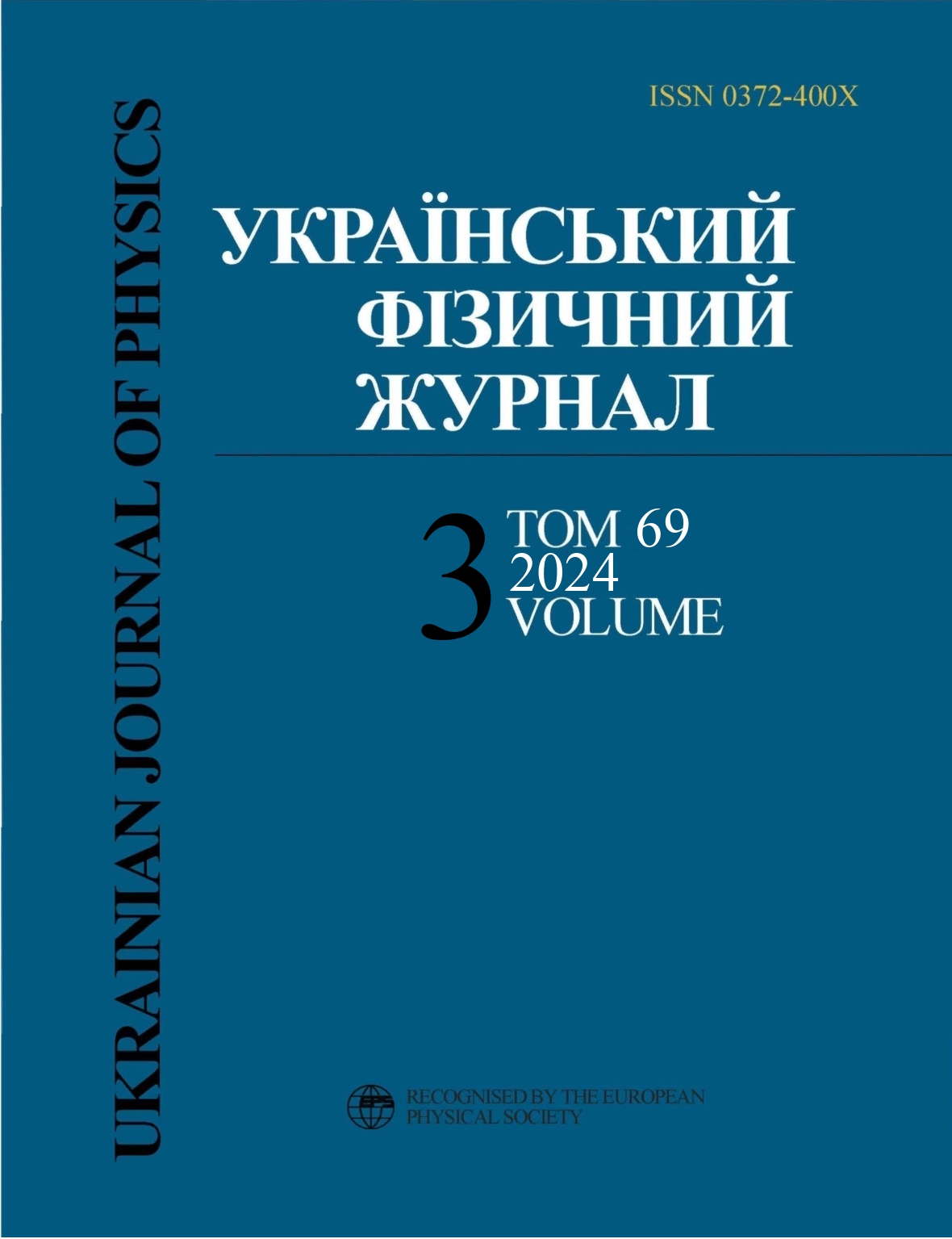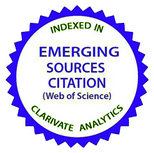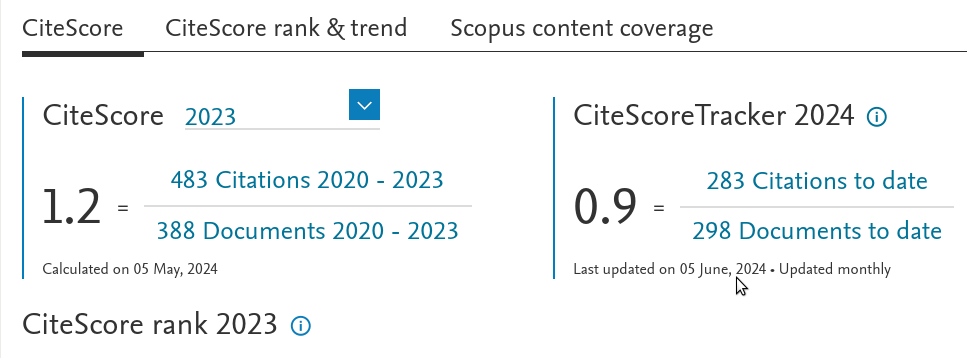Фазові діаграми ізотопологів води та інертних речовин
DOI:
https://doi.org/10.15407/ujpe69.3.179Ключові слова:
iзотопологи води, надважка вода, iнертнi речовини, радон, хiмiчний потенцiал, фазовi дiаграми, рiвняння Кiрхгофа, функцiї Масьє, потрiйна точкаАнотація
У роботi наведено фазовi дiаграми, якi розраховано за лiтературними даними для iзотопологiв води та iнертних речовин. Проведено перевiрку принципу вiдповiдних станiв при використаннi калоричних змiнних. Показано, що у приведених координатах температури, тиску та хiмiчного потенцiалу iзотопологи води складають одну групу речовин i мають подiбнi фазовi дiаграми. Разом з тим, iнертнi речовини, починаючи з аргону, в зазначених координатах утворюють iншу групу речовин з подiбними фазовими дiаграмами. В той самий час, гелiй та неон, для яких квантовий параметр де Бура за величиною є значним, мають фазовi дiаграми, вiдмiннi вiд дiаграм для iнших iнертних речовин. Спрогнозовано фазовi дiаграми тритiйованої води T2O та радону Rn.
Посилання
A.I. Fisenko, N.P. Malomuzh, A.V. Oleynik. To what extent are thermodynamic properties of water argon-like? Chem. Phys. Lett. 450, 297 (2008).
https://doi.org/10.1016/j.cplett.2007.11.036
I.V. Zhyganiuk, M.P. Malomuzh. Physical nature of hydrogen bond. Ukr. J. Phys. 60, 960 (2015).
https://doi.org/10.15407/ujpe60.09.0960
L.A. Bulavin, V.Ya. Gotsulskyi, N.P. Malomuzh, A.I. Fisenko. Crucial role of water in the formation of basic properties of living matter. Ukr. J. Phys. 65, 794 (2020).
https://doi.org/10.15407/ujpe65.9.794
L.A. Bulavin, Ye.G. Rudnikov. Temperature and pressure effect on the thermodynamics coefficient (dV/dT)P of water. Ukr. J. Phys. 68, 122 (2023).
https://doi.org/10.15407/ujpe68.6.390
L.A. Bulavin, Ye. G.Rudnikov. The influence of the temperature and chemical potential on the thermodynamic coefficient −(dV/dT)T of water. Ukr. J. Phys. 68, 390 (2023).
https://doi.org/10.15407/ujpe68.6.390
L.A. Bulavin, Ye.G. Rudnikov, A.V. Chalyi. Thermodynamic anomalies of water near its singular temperature of 42∘C. J. Mol. Liq. 389, 122849 (2023).
https://doi.org/10.1016/j.molliq.2023.122849
G.M. Kontogeorgis, A. Holster, N. Kottaki, E. Tsochantaris, F. Topsøe, J. Poulsen, M. Bache, X. Liang, N.S. Blom, J. Kronholm. Water structure, properties and some applications. A review. Chem. Thermodyn. Thermal Anal. 6, 100053 (2022).
https://doi.org/10.1016/j.ctta.2022.100053
H. Tanaka. Roles of liquid structural ordering in glass transition, crystallization, and water's anomalies. J. NonCryst. Solids X 13, 100076 (2022).
https://doi.org/10.1016/j.nocx.2021.100076
M.F. Chaplin. Structure and properties of water in its various states. In: Encyclopedia of Water: Science, Technology, and Society. Edited by P.A. Maurice (Wiley, 2019).
https://doi.org/10.1002/9781119300762.wsts0002
V. Pogorelov, I. Doroshenko, G. Pitsevich, V. Balevicius, V. Sablinskas, B. Krivenko, L.G.M. Pettersson. From clusters to condensed phase - FT IR studies of water. J. Mol. Liq. 235, 7 (2017).
https://doi.org/10.1016/j.molliq.2016.12.037
G. Pitsevich, I. Doroshenko, A. Malevich, E. Shalamberidze, V. Sapeshko, V. Pogorelov, L.G.M. Pettersson. Temperature dependence of the intensity of the vibrationrotational absorption band v2 of H2O trapped in an argon matrix. Spectrochim. Acta A 172, 83 (2017).
https://doi.org/10.1016/j.saa.2016.04.028
O.V. Tomchuk, L.A. Bulavin, V.L. Aksenov, V.M. Garamus, O.I. Ivankov, A.Y. Vul', A.T. Dideikin, M.V. Avdeev. Small-angle scattering from polydisperse particles with a diffusive surface. J. Appl. Crystallogr. 47, 642 (2014).
https://doi.org/10.1107/S1600576714001216
E.A. Kyzyma, A.A. Tomchuk, L.A. Bulavin, V.I. Petrenko, L. Almasy, M.V. Korobov, D.S. Volkov, I.V. Mikheev, I.V. Koshlan, N.A. Koshlan, P. Bl'aha, M.V. Avdeev, V.L. Aksenov. Structure and toxicity of aqueous fullerene C60 solutions. J. Surf. Investig. X-ray Synchr. Neutr. Techn. 9, 1 (2015).
https://doi.org/10.1134/S1027451015010127
V.I. Petrenko, O.P. Artykulnyi, L.A. Bulavin, L. Alm'asy, V.M. Garamus, O.I. Ivankov, N.A. Grigoryeva, L. Vekas, P. Kopcansky, M.V. Avdeev. On the impact of surfactant type on the structure of aqueous ferrofluids. Colloid. Surface. A 541, 222 (2018).
https://doi.org/10.1016/j.colsurfa.2017.03.054
J.H.S. Lee, K. Ramamurthi. Fundamentals of Thermodynamics (CRC Press, 2022).
V.V. Sychev. The Differential Equations Of Thermodynamics (CRC Press, 1991).
C. Yaws. Thermophysical Properties of Chemicals and Hydrocarbons. 2nd edition (Gulf Professional Publishing, 2014).
M.Z. Southard, D.W. Green. Perry's Chemical Engineers' Handbook (Mcgraw-Hill Education, 2019).
M.F. Chaplin. Water Structure and Science; https:// water.lsbu.ac.uk/water/water_structure_science.html.
Thermophysical Properties of Fluid Systems. NIST Chemistry WebBook, SRD 69 ; https://webbook.nist.gov/ chemistry/fluid.
MiniRefprop Database, NIST; https://trc.nist.gov/ refprop/MINIREF/MINIREF.HTM.
I.H. Bell, S. Wronski, V. Quoilin. Lemort pure and pseudopure fluid thermophysical property evaluation and the open-source thermophysical property library coolprop. Ind. Eng. Chem. Res. 53, 2498 (2014).
https://doi.org/10.1021/ie4033999
Refprop Database, NIST ; https://www.nist.gov/programs-projects/reference-fluidthermodynamic-and-transport-properties-database-refprop.
ThermodataEngine Database, NIST ; https://trc.nist.gov/tde.html.
WTT Database, NIST; https://wtt-pro.nist.gov/wtt-pro/.
MOL-Instincts Database, ChemEssen; https://www.molinstincts.com/.
ChemRTP Database, ChemEssen; http://www.chemrtp.com/.
Phase Diagrams: Understanding the Basics. Edited by F.C. Campbell (ASM International, 2012).
B. Cantor. The Equations of Materials (Oxford University Press, 2020).
https://doi.org/10.1093/oso/9780198851875.001.0001
M.A. Anisimov. Critical Phenomena in Liquids and Liquid Crystals (CRC Press, 1991).
A. Oleinikova, L. Bulavin, V. Pipich. The viscosity anomaly near the lower critical consolute point. Int. J. Thermophys. 20, 889 (1999).
https://doi.org/10.1023/A:1022639304064
JANAF Thermochemical Tables. J. Phys. Chem. Ref. Data 11, 695 (1982).
https://doi.org/10.1063/1.555666
LV. Gurvich, I.V. Veits, C.B. Alcock. Thermodynamics Properties of Individual Substances. 4th edition (RAS, 1989) [ISBN: 0-8493-9926-2].
W. Wagner, T. Riethmann, R. Feistel, A.H. Harvey. New equations for the sublimation pressure and melting pressure of H2O Ice Ih. J. Phys. Chem. Ref. Data 40, 043103, (2011).
https://doi.org/10.1063/1.3657937
S. Herrig, M. Thol, A.H. Harvey, E.W. Lemmon. A reference equation of state for heavy water. J. Phys. Chem. Ref. Data 47, 043102 (2018).
https://doi.org/10.1063/1.5053993
F.A. Deeney, J.P. O'Leary. Zero point energy and the origin of the density maximum in water. Phys. Lett. A 372, 1551 (2007).
https://doi.org/10.1016/j.physleta.2007.10.031
G. Boato, G. Casanova. A self-consistent set of molecular parameters for neon, argon, krypton and xenon. Physica 27, 571 (1961).
https://doi.org/10.1016/0031-8914(61)90072-6
D. Santamaria-Perez, G.D. Mukherjee, B. Schwager, R. Boehler. High-pressure melting curve of helium and neon: Deviations from corresponding states theory. Phys. Rev. B 81, 214101 (2010).
https://doi.org/10.1103/PhysRevB.81.214101
W.E. Keller. Helium-3 and Helium-4 (Springer Science + Business Media, 1969).
https://doi.org/10.1007/978-1-4899-6485-4
The McGraw-Hill Dictionary of Scientific and Technical Terms. 7th edition (McGraw-Hill, 2016).
J. Wisniak. Historical development of the vapor pressure equation from Dalton to Antoine. J. Phase Equil. 22, 622 (2001).
https://doi.org/10.1007/s11669-001-0026-x
A.M.A. Dias, J.C. Pamies, L.F. Vega, J.A.P. Coutinho, I.M. Marrucho. Modelling the solubility of gases in saturated and substituted perfluoroalkanes. Polish J. Chem. 80, 143 (2006).
N. Matsunaga, A. Nagashima. Prediction of the critical constants and the saturation vapor pressure of tritium oxide. Ind. Eng. Chem. Fund. 25, 115 (1986).
https://doi.org/10.1021/i100021a017
H.W. Xiang. Vapor pressure and critical point of tritium oxide. J. Phys. Chem. Ref. Data 32, 1707 (2003).
https://doi.org/10.1063/1.1565352
N.H. Fletcher. The Chemical Physics of Ice (Cambridge University Press, 1970).
https://doi.org/10.1017/CBO9780511735639
P.W. Bridgman. Water, in the liquid and five solid forms, under pressure. Proc. Am. Acad. Arts Sci. 47, 439 (1912).
https://doi.org/10.2307/20022754
W. Wagner, A. Pruss. The IAPWS formulation 1995 for the thermodynamic properties of ordinary water substance for general and scientific use. J. Phys. Chem. Ref. Data 31, 387 (2002).
https://doi.org/10.1063/1.1461829
G.S. Kell. Effect of isotopic composition, temperature, pressure, and dissolved gases on the density of liquid water. J. Phys. Chem. Ref. Data 6, 1109 (1977).
https://doi.org/10.1063/1.555561
J. Horita, D.R. Cole. Stable isotope partitioning in aqueous and hydrothermal systems to elevated temperatures. In: Aqueous Systems at Elevated Temperatures and Pressures: Physical Chemistry in Water, Steam and Hydrothermal Solutions. Edited by D.A. Palmer, R. Fern'andez-Prini, A.H. Harvey (Elsevier, 2004).
https://doi.org/10.1016/B978-012544461-3/50010-7
D.R. White, W.L. Tew. Improved estimates of the isotopic correction constants for the triple point of water. Int. J. Thermophys. 31, 1644 (2010).
https://doi.org/10.1007/s10765-010-0819-4
F. Mallamace, C. Corsaro, D. Mallamace, S. Vasi, C. Vasi, H.E. Stanley. Thermodynamic properties of bulk and confined water. J. Chem. Phys. 141, 18C504 (2014).
https://doi.org/10.1063/1.4895548
A. Khan, M. Rezwan Khan, M. Ferdouse Khan, F. Khanam. A liquid water model: Explaining the anomalous density variation of liquid D2O and shifting of density maximum under pressure. J. Mol. Struct. (Theochem) 679, 165 (2004).
https://doi.org/10.1016/j.theochem.2004.04.017
P. Gallo, K. Amann-Winkel, Ch.A. Angell, M.A. Anisimov, F. Caupin, Ch. Chakravarty, E. Lascaris, T. Loerting, A.Z. Panagiotopoulos, J. Russo, J.A. Sellberg, H.E. Stanley, H. Tanaka, C. Vega, L. Xu, L.G.M. Pettersson. Water: A tale of two liquids. Chem. Rev. 116, 7463 (2016).
https://doi.org/10.1021/acs.chemrev.5b00750
J. Russo, H. Tanaka. Understanding water's anomalies with locally favoured structures. Nat. Commun. 5, 3556 (2014).
https://doi.org/10.1038/ncomms4556
A. Nilsson, L.G.M. Pettersson. The structural origin of anomalous properties of liquid water. Nat. Commun. 6, 8998 (2015).
https://doi.org/10.1038/ncomms9998
R. Shi, H. Tanaka. Direct evidence in the scattering function for the coexistence of two types of local structures in liquid water. J. Am. Chem. Soc. 142, 2868 (2020).
https://doi.org/10.1021/jacs.9b11211
A. Kholmanskiy, N. Zaytseva. Physically adequate approximations for abnormal temperature dependences of water characteristics. J. Mol. Liq. 275, 741 (2019).
https://doi.org/10.1016/j.molliq.2018.11.059
A. Kholmanskiy. Hydrogen bonds and dynamics of liquid water and alcohols, J. Mol. Liq. 325, 115237 (2021).
https://doi.org/10.1016/j.molliq.2020.115237
A. Stepanov. Thermodynamics of substances with negative thermal expansion and negative compressibility. J. NonCryst. Solids 356, 1168 (2010).
https://doi.org/10.1016/j.jnoncrysol.2010.03.013
O. Khorolskyi, N.P. Malomuzh. pH and H-bonding energy for pure water. Chem. Phys. Lett. 828, 140713 (2023).
https://doi.org/10.1016/j.cplett.2023.140713
O. Khorolskyi, A. Kryvoruchko. Non-trivial behavior of the acid-base balance of pure water near the temperature of its dynamic phase transition. Ukr. J. Phys. 66, 972 (2021).
https://doi.org/10.15407/ujpe66.11.972
A.I. Fisenko, O.V. Khorolskyi, N.P. Malomuzh, A.A. Guslisty. Relationship between the major parameters of warmblooded organisms' life activity and the properties of aqueous salt solutions. AIMS Biophysics 10, 372 (2023).
https://doi.org/10.3934/biophy.2023022
M.M. Lazarenko, O.M. Alekseev, S.G. Nedilko, A.O. Sobchuk, V.I. Kovalchuk, S.V. Gryn, V.P. Scherbatskyi, S.Yu. Tkachev, D.A. Andrusenko, E.G. Rudnikov, A.V. Brytan, K.S. Yablochkova, E.A. Lysenkov, R.V. Dinzhos, S. Thomas, T.R. Abraham. Impact of the alkali metals ions on the dielectric relaxation and phase transitions in water solutions of the hydroxypropylcellulose. In: Nanoelectronics, Nanooptics, Nanochemistry and Nanobiotechnology, and Their Applications. NANO 2022 (Springer, 2022).
https://doi.org/10.1007/978-3-031-42708-4_3
C. Andreani, C. Corsaro, D. Mallamace, G. Romanell, R. Senesi, F. Mallamace. The onset of the tetrabonded structure in liquid water. Sci. China Phys. Mech. Astron. 62, 107008 (2019).
https://doi.org/10.1007/s11433-018-9408-2
A.G. Lyapin, O.V. Stal'gorova, E.L. Gromnitskaya, V.V. Brazhkin. Crossover between the thermodynamic and nonequilibrium scenarios of structural transformations of H2O Ih ice during compression. J. Exper. Theor. Phys. 94, 283 (2002).
https://doi.org/10.1134/1.1458477
G.S. Kell. Precise representation of volume properties of water at one atmosphere. J. Chem. Eng. Data 12, 66 (1967).
https://doi.org/10.1021/je60032a018
P.G. Hill, R.D.Ch. MacMillan, V. Lee. A fundamental equation of state for heavy water. J. Phys. Chem. Ref. Data 11, 1 (1982).
https://doi.org/10.1063/1.555661
M. Goldblatt, The density of liquid T2O. J. Phys. Chem. 68, 147 (1964).
https://doi.org/10.1021/j100783a024
F. Franks. Water. A Matrix of Life. 2nd edition (Royal Society of Chemistry, 2000).
Downloads
Опубліковано
Як цитувати
Номер
Розділ
Ліцензія
Ліцензійний Договір
на використання Твору
м. Київ, Україна
Відповідальний автор та співавтори (надалі іменовані як Автор(и)) статті, яку він (вони) подають до Українського фізичного журналу, (надалі іменована як Твір) з одного боку та Інститут теоретичної фізики імені М.М. Боголюбова НАН України в особі директора (надалі – Видавець) з іншого боку уклали даний Договір про таке:
1. Предмет договору.
Автор(и) надає(ють) Видавцю безоплатно невиключні права на використання Твору (наукового, технічного або іншого характеру) на умовах, визначених цим Договором.
2. Способи використання Твору.
2.1. Автор(и) надає(ють) Видавцю право на використання Твору таким чином:
2.1.1. Використовувати Твір шляхом його видання в Українському фізичному журналі (далі – Видання) мовою оригіналу та в перекладі на англійську (погоджений Автором(ами) і Видавцем примірник Твору, прийнятого до друку, є невід’ємною частиною Ліцензійного договору).
2.1.2. Переробляти, адаптувати або іншим чином змінювати Твір за погодженням з Автором(ами).
2.1.3. Перекладати Твір у випадку, коли Твір викладений іншою мовою, ніж мова, якою передбачена публікація у Виданні.
2.2. Якщо Автор(и) виявить(лять) бажання використовувати Твір в інший спосіб, як то публікувати перекладену версію Твору (окрім випадку, зазначеного в п. 2.1.3 цього Договору); розміщувати повністю або частково в мережі Інтернет; публікувати Твір в інших, у тому числі іноземних, виданнях; включати Твір як складову частину інших збірників, антологій, енциклопедій тощо, то Автор(и) мають отримати на це письмовий дозвіл від Видавця.
3. Територія використання.
Автор(и) надає(ють) Видавцю право на використання Твору способами, зазначеними у п.п. 2.1.1–2.1.3 цього Договору, на території України, а також право на розповсюдження Твору як невід’ємної складової частини Видання на території України та інших країн шляхом передплати, продажу та безоплатної передачі третій стороні.
4. Строк, на який надаються права.
4.1. Договір є чинним з дати підписання та діє протягом усього часу функціонування Видання.
5. Застереження.
5.1. Автор(и) заявляє(ють), що:
– він/вона є автором (співавтором) Твору;
– авторські права на даний Твір не передані іншій стороні;
– даний Твір не був раніше опублікований і не буде опублікований у будь-якому іншому виданні до публікації його Видавцем (див. також п. 2.2);
– Автор(и) не порушив(ли) права інтелектуальної власності інших осіб. Якщо у Творі наведені матеріали інших осіб за виключенням випадків цитування в обсязі, виправданому науковим, інформаційним або критичним характером Твору, використання таких матеріалів здійснене Автором(ами) з дотриманням норм міжнародного законодавства і законодавства України.
6. Реквізити і підписи сторін.
Видавець: Інститут теоретичної фізики імені М.М. Боголюбова НАН України.
Адреса: м. Київ, вул. Метрологічна 14-б.
Автор: Електронний підпис від імені та за погодження всіх співавторів.

















